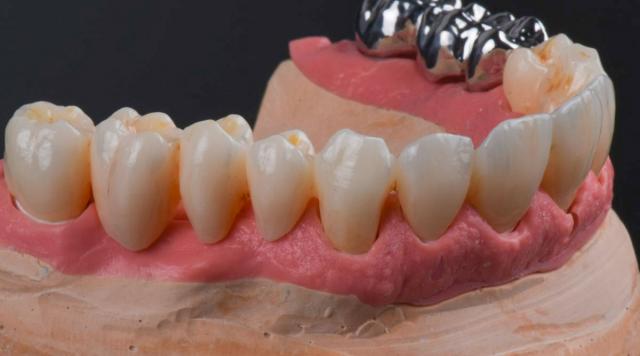17.01.2022.
Author: Dental technician
What is the cost of installing all jaw teeth in Croatia?
If some of your teeth are in poor condition or they are missing, existing "healthy" teeth can serve as carriers for prosthetic replacements. A fixed prosthetic replacement of the whole jaw, depending on the situation, in most cases has 12-14 crowns.

The price of a prosthetic replacement or "circular" bridge to be cemented largely depends on the material that the dentist and dental technician decide on after the planned therapy in collaboration with the patient.
A number of factors determine the choice of material – starting from the patient’s financial situation all the way to the indications and contraindications of certain materials for the manufacture of fixed prosthetic replacements. There are many materials on the market today that are used to make crowns and bridges, but the most common are metal-ceramics, zirconium oxide and glass-ceramic materials (lithium disilicate…).
When visiting the dentist, the first thing to do is to plan the therapy and the diagnostic approach. After that, the treatment and preparation of teeth for a fixed prosthetic replacement is approached. During therapy, temporary teeth are made in the laboratory as a replacement that mimics the final work very well, both in its appearance and its function. Temporary work can be made from different materials depending on the duration of the therapy itself. Composite materials for their production are not recommended due to the fragility of the material. It is recommended to use self-adhesive acrylates or PMMA made in a CAM system. The price of such a replacement made of PMMA for a single jaw is about 300 euros. After that, the production of final work starts.
If we take into account that the patient's therapy does not allow the production of crowns from lithium disilicate and similar materials, in most cases in the past, and even today, the production of metal-ceramic bridge is approached. It is a metal base (co-cr - sometimes even nickel, which often causes allergies) layered with a thin layer of ceramic.
Metal is one of the oldest materials for making replacements and has its advantages and disadvantages. One of the main disadvantages is the "screening" of the grey edges of the crowns during the process of gum recession.
Thanks to technology and thus to the convergence of the prices of other materials to "metal ceramics", metal-free substitutes are increasingly used. Glass ceramics have optical properties most similar to natural teeth, but not mechanical properties during the process of production of bridges with one or more intermediate members. Recently, more and more zirconium oxides of various structures are on the market, and thus the best compromise between the optical and mechanical properties of the material has been found.
A zircon oxide substitute can be monolithic or layered with different ceramic masses. Monolithic zircon (hand polished) is a good solution for, for example, posterior teeth in patients suffering from bruxism because it reduces the possibility of the material cracking.
The best choice today is zirconium oxide layered with ceramics. Zirconium oxide is a substrate that gives the best mechanical properties, and is the material that has the best biocompatibility with gums, while ceramics have excellent optical properties and completely mimic natural teeth.
This is the best choice, but often price determines the crucial role. Thus, you will pay 2,000 euros for a metal ceramic bridge of one jaw at a dentist in Croatia, while a zircon bridge will cost you around 3,000 euros.
